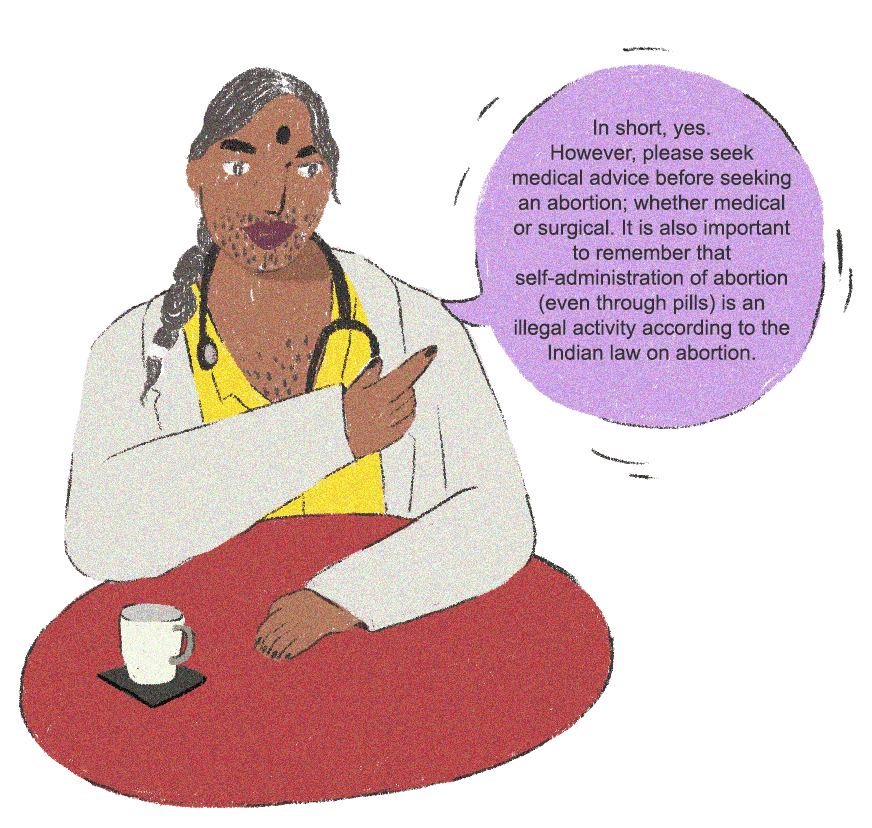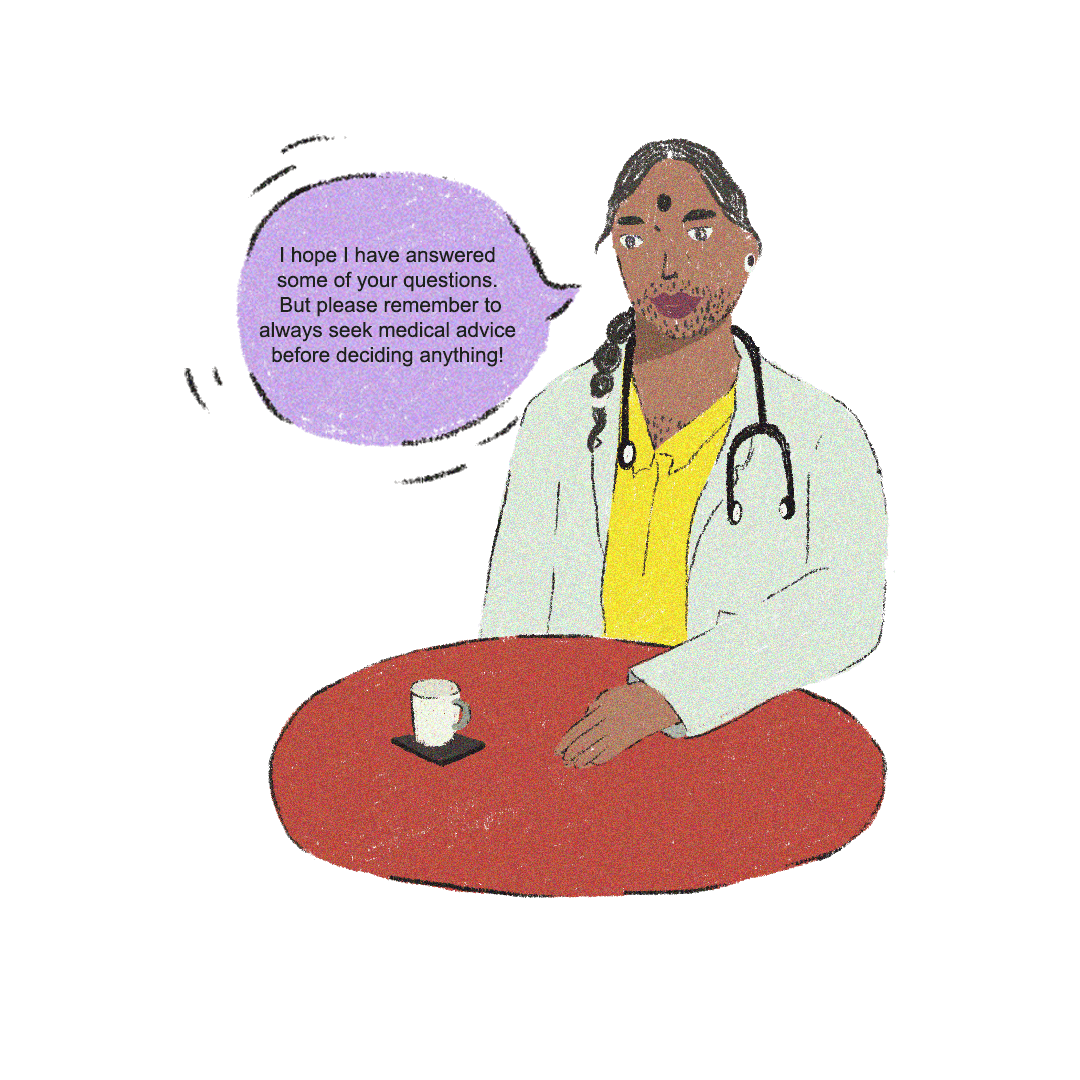Scroll to:
- Can abortions be performed through pills?
- How can you avoid unintended pregnancies?
- How do you prepare for an abortion?
- Questions you would like to ask your gynaecologist

Medical Abortions
A medical abortion can be administered in two ways that involve different regimens of the pills Mifepristone and Misoprostol. Mifepristone stops the pregnancy while Misoprostol induces uterine contraction, which expels the products of conception out through the vagina.
The first regimen involves both the medications, which is the common regimen in India. Let’s say a person first takes one pill of Mifepristone, amounting to a 200 mg dose, with water. She will then have to take four pills of Misoprostol, which amounts to an 800 mcg dose. There can be various ways in which Misoprostol can be taken. It can be taken orally with water. Another way is taking it buccally by placing the pill between one’s gums and the cheek until it dissolves. A third method is using the pill vaginally by inserting the pill in one’s vagina or one can use it sublingually which means to keep it under the tongue.
The second regimen involves taking only four pills of Misoprostol. Medical abortion, however, can have side effects. Some of the potential side effects of medical abortion are cramping, bleeding, vomiting and/or nausea, fever/chills, headache and diarrhoea.
In India, medical abortions cannot be carried out by self. To be able to buy these drugs, one needs a doctor’s prescription as these are Schedule H drugs. Schedule H drugs are drugs that cannot be sold without a valid prescription. While there is merit to this law, there are also problems with it. There is stigma prevalent not only among families but also, sometimes doctors themselves perpetuate stigma causing mental and emotional trauma to seekers of abortions. It would have been easier to self-administer a medical abortion in such cases. However, one also needs to understand that going for self-administered abortions is very risky and consulting a doctor is always the safest option. Also, since these drugs are Schedule H drugs and cannot be sold over the counter without a prescription, one can also be booked under the IPC if one went for a medical abortion without a registered medical practitioner’s prescription.
Surgical Abortions
Abortions can also be done surgically via different techniques such as Vacuum Aspiration, Dilation and Evacuation and Dilation and Curettage.
- Vacuum Aspiration is a procedure which uses a vacuum source, usually a syringe to remove the products of conception from the uterus.
- Dilation and Evacuation is a process in which the uterine cervix is dilated and foetal tissue is removed using surgical instruments and suction.
- Dilation and Curettage involves dilating the cervix and removing part of the lining of the uterus and/or contents of the uterus by scraping and scooping. However, it is important to note that this procedure is considered unsafe according to WHO guidelines and is recommended to be phased out. If your doctor recommends this method, it is important for you to know this is not the safest method.
Medical methods and Dilation and Evacuation among surgical methods are the safest methods. Surgical abortion too has potential risks and side-effects such as bleeding, cramping and abdominal pain. These side-effects are similar to menstruation. The products of conception are pushed out of the uterus, similar to the disintegration of the uterine lining during menstruation. Please remember that if any of the side-effects become too severe or last for longer than two days, a doctor must be consulted.

International Women’s Health Coalition and Gynuity Health Projects. (n.d.). Abortion with self-administered Misoprostol: A guide for women.
Ipas Development Foundation. (2009). Ending Pregnancy with Pills [Picture Guide].
Ipas Development Foundation. (2019). Protocols for Medical Abortion. https://ipasorg.azurewebsites.net/clinical-updates/.
National Abortion Federation. (1996). Women Who Have Abortions. Washington, DC: Susan Dudley.
Singh, S. (2010). Global consequences of unsafe abortion. Women’s Health, 6(6), 849-860.
The Federation of Obstetric & Gynaecological Societies of India. (n.d.). FOGSI FOCUS: Medical Abortion. India: Dr. Kiran Kurtkoti.
World Health Organization. (2014). Clinical Practice Handbook for Safe Abortion. Geneva, WHO Press.
World Health Organization. (2018). Medical Management of Abortion. Geneva: WHO Press. Retrieved from https:// creativecommons.org/licenses/by-nc-sa/3.0/igo.
